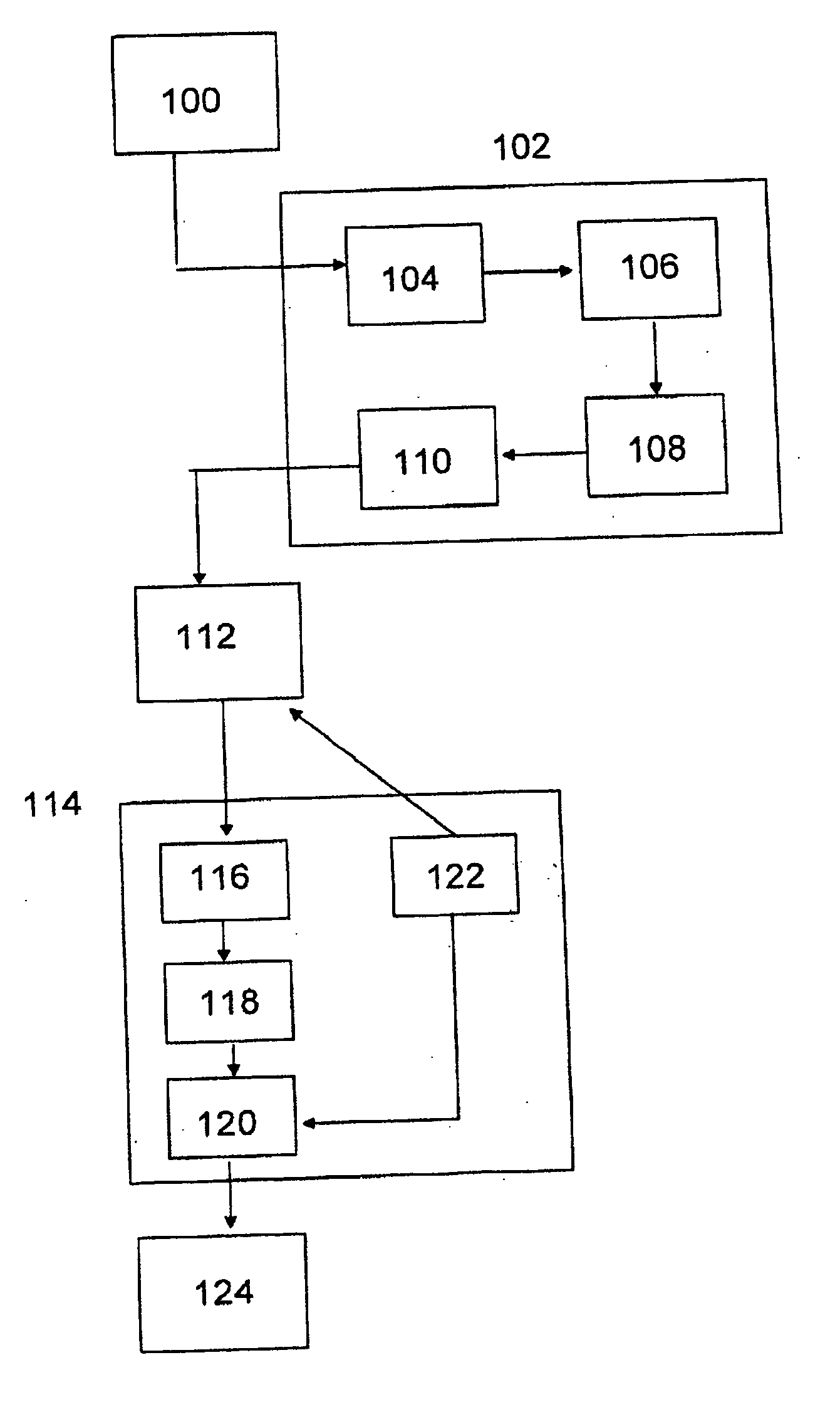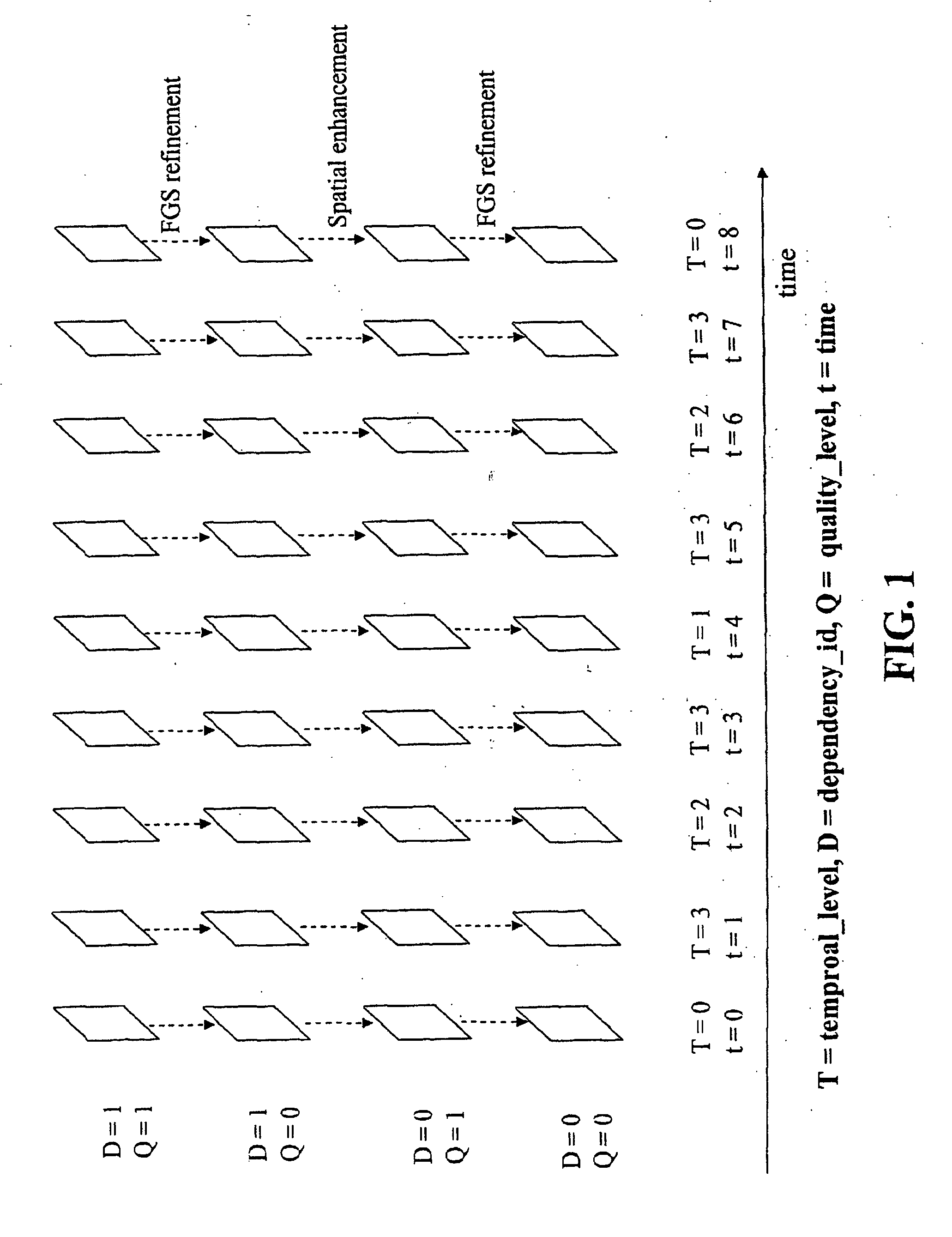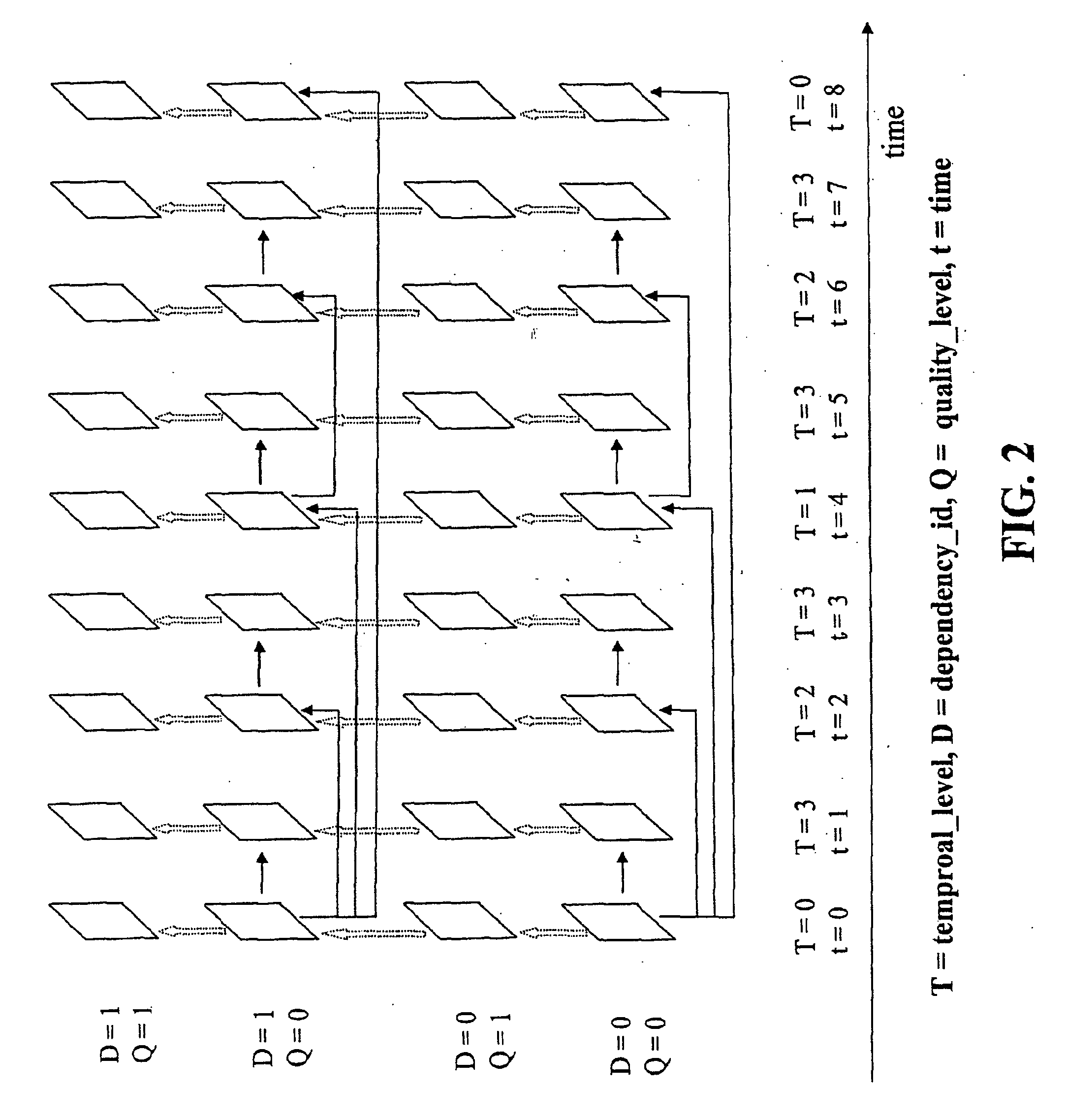Efficient decoded picture buffer management for scalable video coding
a buffer management and video coding technology, applied in the field of video coding, can solve the problems of not being able to efficiently handle the management of decoded pictures, no mechanism available to help the decoder, and no current video compression standard or draft standard implements this concep
- Summary
- Abstract
- Description
- Claims
- Application Information
AI Technical Summary
Benefits of technology
Problems solved by technology
Method used
Image
Examples
Embodiment Construction
[0037] With reference to FIG. 6, a typical multimedia streaming system is described, which is one system for applying the procedure of the present invention.
[0038] A multimedia data streaming system typically comprises one or more multimedia sources 100, such as a video camera and a microphone, or video image or computer graphic files stored in a memory carrier. Raw data obtained from the different multimedia sources 100 is combined into a multimedia file in an encoder 102, which can also be referred to as an editing unit. The raw data arriving from the one or more multimedia sources 100 is first captured using capturing means 104 included in the encoder 102, which capturing means can be typically implemented as different interface cards, driver software, or application software controlling the function of a card. For example, video data may be captured using a video capture card and the associated software. The output of the capturing means 104 is typically either an uncompressed ...
PUM
 Login to View More
Login to View More Abstract
Description
Claims
Application Information
 Login to View More
Login to View More - R&D
- Intellectual Property
- Life Sciences
- Materials
- Tech Scout
- Unparalleled Data Quality
- Higher Quality Content
- 60% Fewer Hallucinations
Browse by: Latest US Patents, China's latest patents, Technical Efficacy Thesaurus, Application Domain, Technology Topic, Popular Technical Reports.
© 2025 PatSnap. All rights reserved.Legal|Privacy policy|Modern Slavery Act Transparency Statement|Sitemap|About US| Contact US: help@patsnap.com



